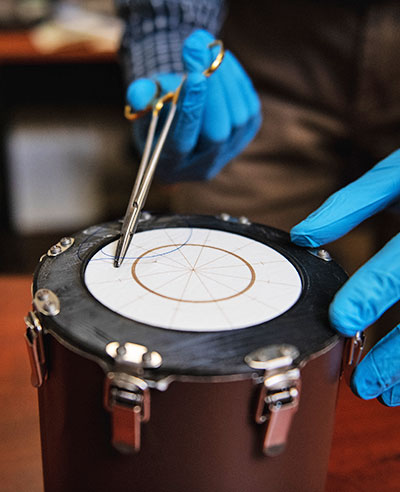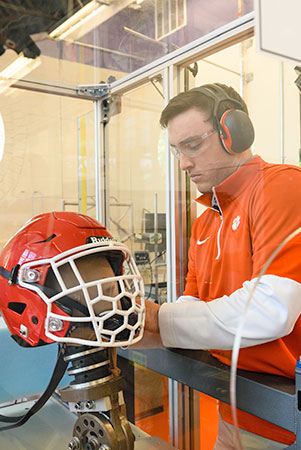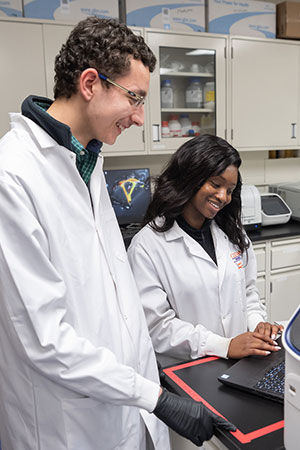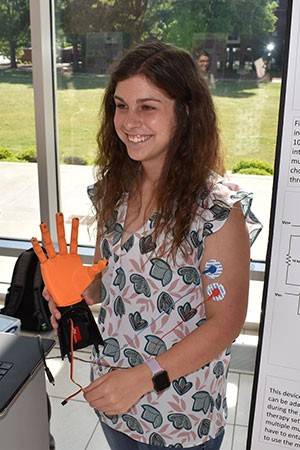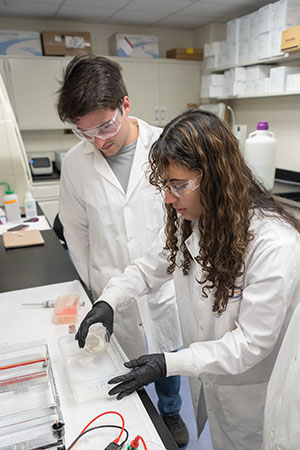Academics
Expanding Biomedical Solutions
According to the U.S. Bureau of Labor Statistics, the employment of bioengineers and biomedical engineers is projected to grow 5% from 2022 to 2032, faster than the average for all occupations. It draws upon an extensive understanding of biology, biochemistry and physiology to design and analyze results.
As the demand for biomedical solutions increases, especially in relation to injuries and disabilities, so will the need for bioengineers and biomedical engineers to design equipment, provide technical support, and develop statistical and 3D models. At Clemson, students learn to work collaboratively in interdisciplinary teams through applied training and mentored research to bring technology from the bench to the clinic.
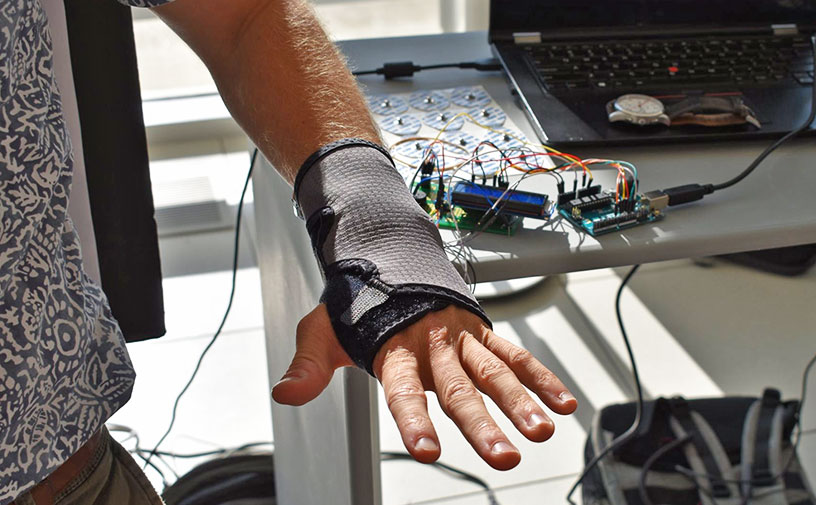
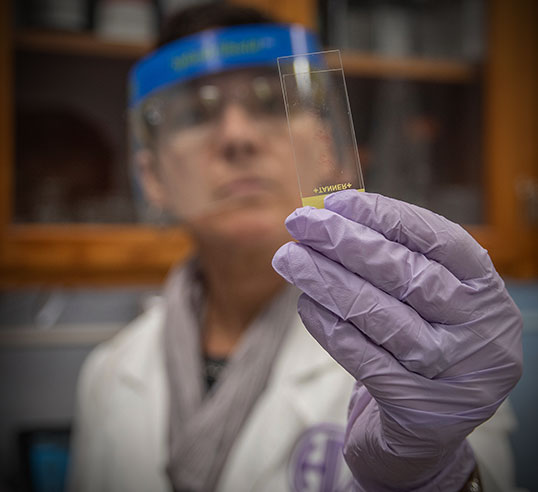
Undergraduate Studies
The Department of Bioengineering at Clemson offers foundational coursework and research that provides bioengineering students with practical, hands-on training in experimental design, data collection/analysis, and dissemination.
Within the department, your classes will combine a solid background in engineering with the study of life sciences. From class to the lab, research is integral to a bioengineering career, and our students are encouraged to get involved in research projects as soon as possible. Courses include the study of EKG simulation, tissue engineering of heart valves, medical technology in the developing world and orthopedic implants. Departmental Honors is thesis-based rather than course-based and can be added to enhance the degree.
The Bachelor of Science in Biomedical Engineering program is accredited by the Engineering Accreditation Commission of ABET, https://www.abet.org, under the General Criteria and the Bioengineering and Biomedical and Similarly Named Engineering Program Criteria.
B.S. Program BIOE HonorsCombined B.S. to Grad
Under the Bachelor's-to-Graduate Combined Degree Programs plan, students can reduce the time necessary to earn both degrees by applying graduate credits towards undergraduate and graduate program requirements. We currently offer M.S. and M.Eng options to fit a variety of interests. Students must have completed through their junior year for eligibility.
Combined Program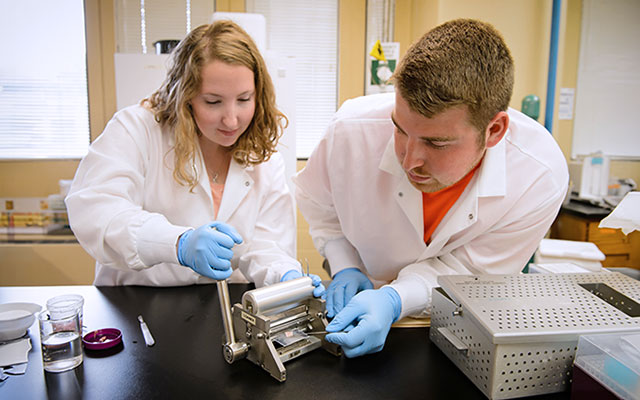
Research Experience
For the Senior Design program, students shadow and collaborate with clinicians during the semester to identify hundreds of opportunities for innovation. From these clinical needs, students perform needs assessments and select opportunities that have the highest potential clinical and economic impact.
“Our students complete a rigorous 2-semester design process that is modeled on FDA guidelines and industry standards. They investigate a clinical need, and together with their clinical, industry and academic mentors, they produce innovative solutions with the potential for commercialization.”
John DesJardinsDirectorClemson Bioengineering's Senior Design
“I am currently working at a company that creates a variety of custom products for orthognathic surgery," she said. "So, having that background knowledge of how things go from an idea to a fully functional device just helps me understand and appreciate the whole process that much more.”
Anna WichmannBioengineering '23
Collaborative Design
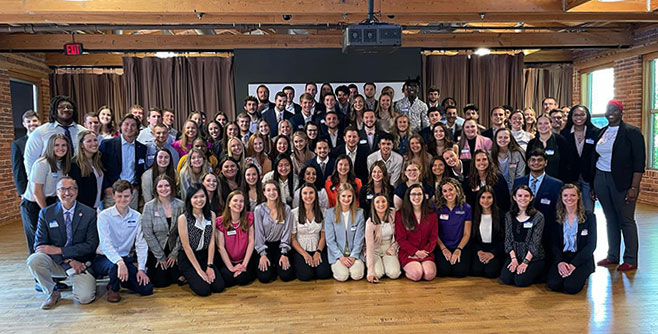
Bioengineering Senior Design
The Senior Design program began in 2011 and has developed into a multi-semester program that incorporates clinical, educational and entrepreneurial processes in biomedical device design and increases understanding of civic responsibility within biomedical innovation.
Partnering with local healthcare providers in the collaborative design program allows students to engage with clinicians, review problems, and assess environments directly and, through hands-on collaboration, solve real problems in the healthcare community.
Each year, student teams and research groups showcase their novel biomedical technologies and compete for design awards at the annual Bioengineering Senior Design Symposium. Many teams have gone on to the national levels with their design, competing against such schools as Johns Hopkins University, Georgia Tech, the University of California Riverside, Drexel University, Columbia University, and University of Texas at Arlington.
Academic Support
After the first year of classes, students can declare their major in Bioengineering. Each student is assigned an academic advisor upon entering the biomedical engineering program.
Bioengineering Advising- Academic Policies
- Career Planning
- Change Major
- Course Registration
- Credits Taken Elsewhere
- Degree Requirements
- Internship Opportunities
Beyond the Classroom
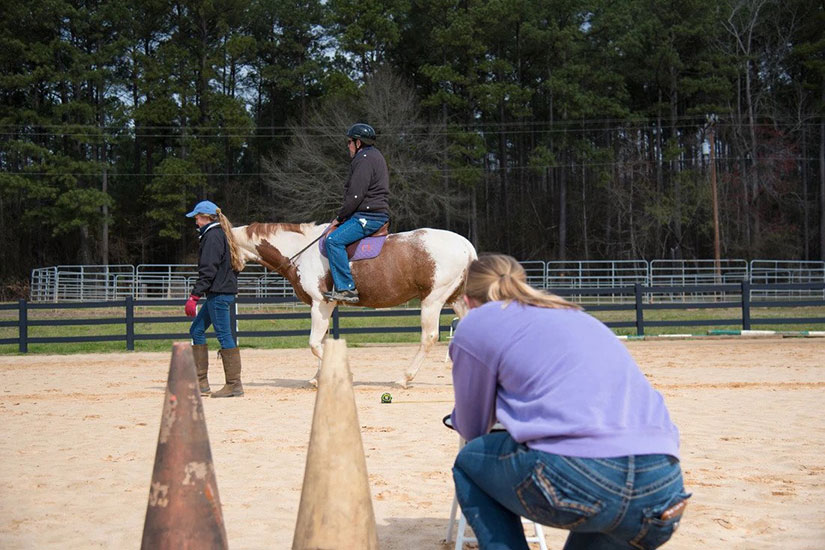
Creative Inquiry
Creative Inquiry (CI) is a form of undergraduate research that uses an imaginative way to address different topics. Current CI projects cover topics such as smart materials for biomedical applications, adaptive saddles for effective use in hippotherapy, image-guided drug delivery, and incorporating human factors engineering into medical device design.
CI ProjectsStudy Abroad
Beyond the opportunity to engage with others from around the world, studying abroad allows students to view how different cultures and economies interact with advancing technologies. There are faculty-lead options for bioengineering students in Japan and in Western Europe. For a list of degree-advancing study abroad opportunities, visit our study abroad page.
BIOE Study Abroad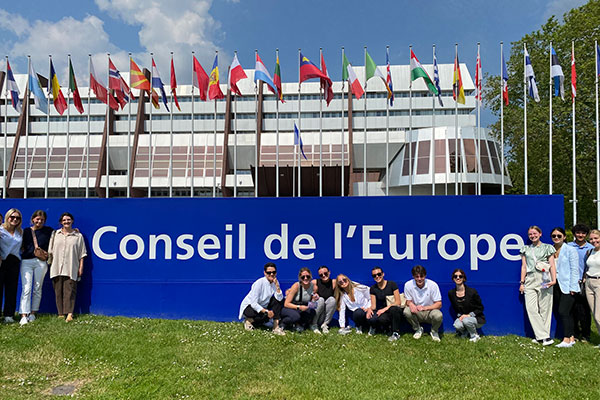
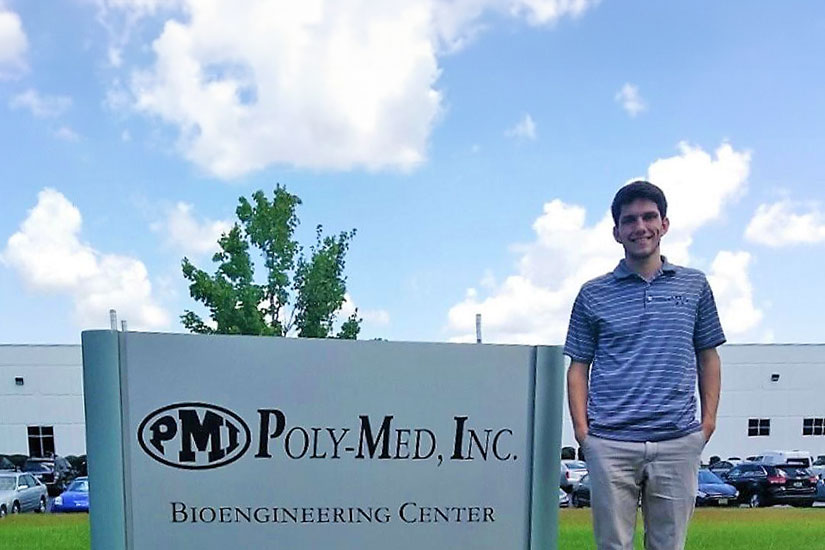
Summer Internships
Many Bioengineering undergrads elect to participate in an internship program to gain practical experience while pursuing academic goals. One of the most popular ones involves working with the NSF (National Science Foundation) as a Paid Summer Internship under the REU (Research Experiences for Undergraduates) umbrella.
Summer Opportunities